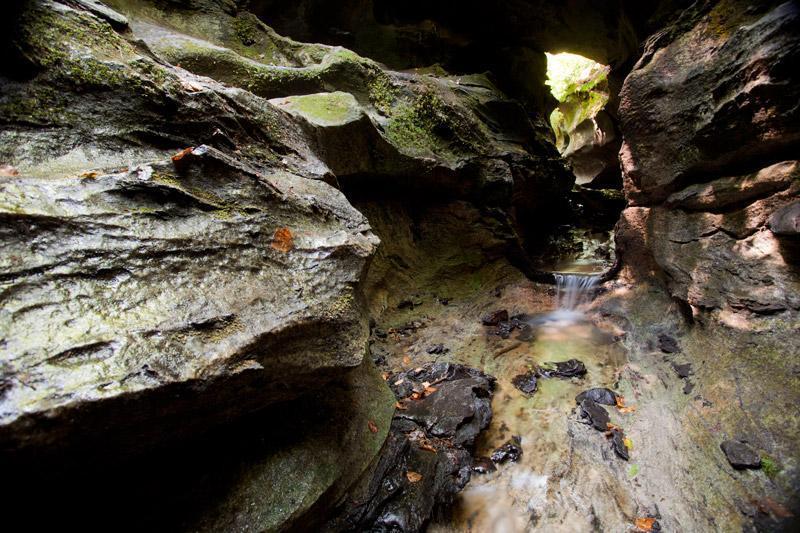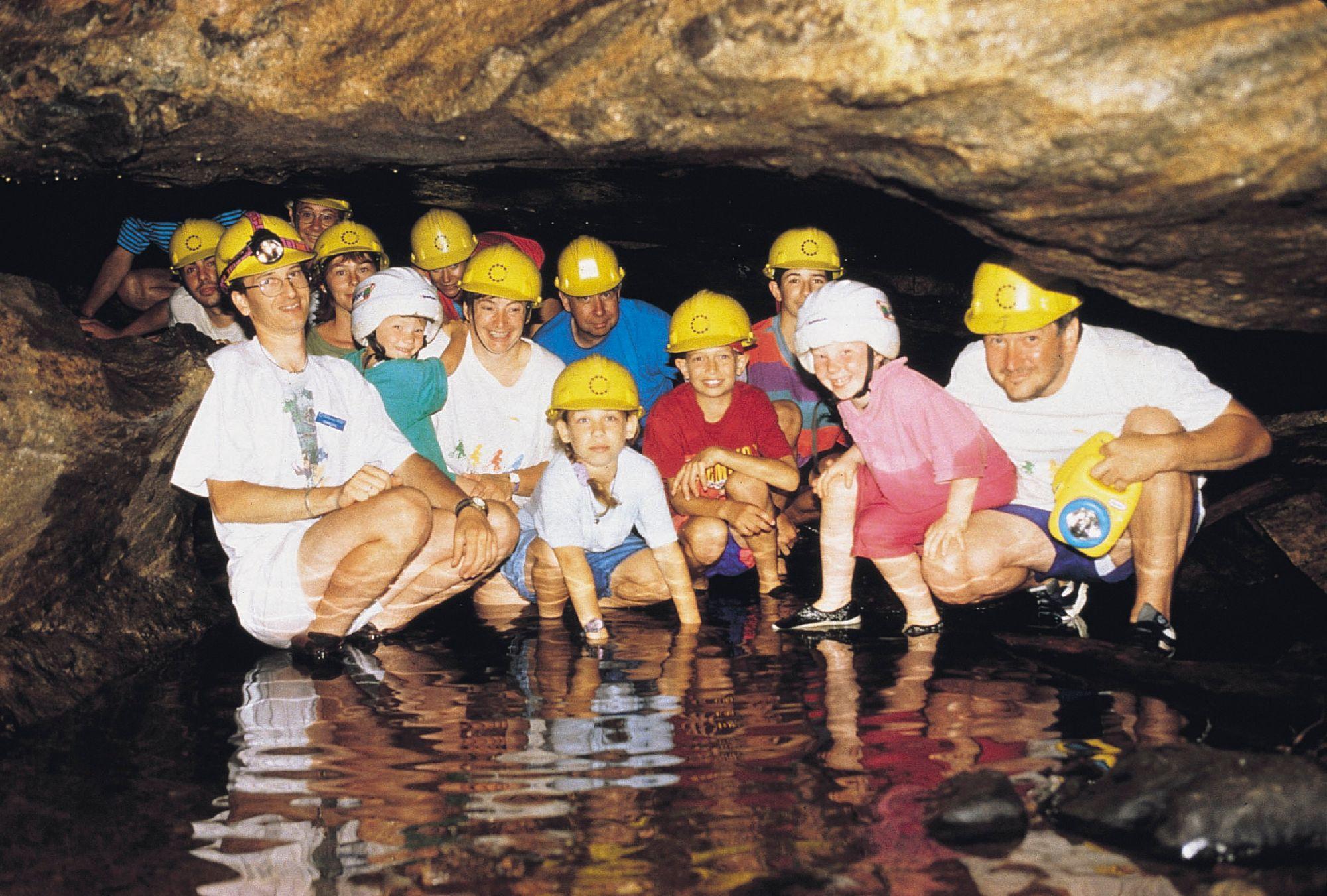Advisory
Please take note of the following before your visit.
Lusk Cave is in the Philippe Lake area. It was formed at the same time as Lusk Creek, about 11,000 years ago. It is still an active cave, as the narrow creek still flows through it and continues to erode the soluble marble that forms the cave’s walls.
When the cave is open, it is safe for people to visit, using the proper equipment.
Accessibility
The cave and the trail that leads to it are not accessible for persons with reduced mobility and people with strollers. Exploration of the cave is not advised for children under seven years of age.
Exploring the cave
Seasonal opening
The cave is open from spring until fall, when the water level is safe.
How to get there
Walking is the only way to access the Lusk Cave. If you wish, you can do part of the route by bike, but you will eventually have to walk along the trail leading to the cave.
Route
The hike begins at Parent Beach, 5 km from the cave. From the parking lot, follow Trail 73 to Philippe Lake Parkway after Smith Beach (1.5 km on a steep and narrow path). Please note that Trail 50 is partially closed due to construction.
What to bring
Water levels in the cave can be as high as a metre or more. It is not possible to go through the cave without getting wet. Please note that the water in the cave is very cold in the early and late parts of the season.
Here’s what you need to bring to help you enjoy a pleasant and safe experience:
- wetsuit (in early and late season);
- bathing suit;
- extra footwear or water shoes;
- protective helmet, such as a bike helmet;
- waterproof flashlight.
Facilities
- Parking: The Parent Beach parking lot is open from spring to fall only. From mid-June until Labour Day, vehicle access fees apply.
- Washrooms: There are washrooms and change rooms at the beaches.
- Picnic area: There are picnic tables at the beaches.
History of the cave
Documents
- Lusk Cave Underground Map (1.309 MB)
- The Lusk Cave Trail (178.877 KB)
- Gatineau Park Summer Trails Map 2024 (6.91 MB)



